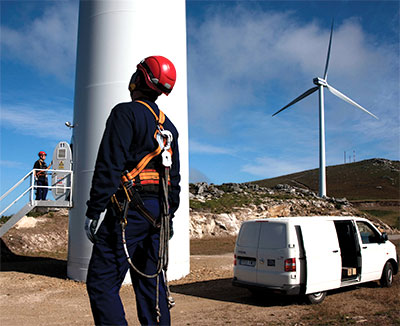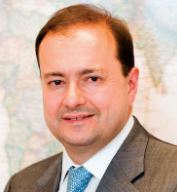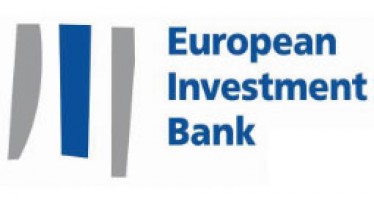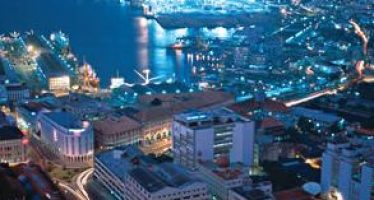IFC: Moving to Green Growth in Emerging Europe, Central Asia and the Greater Middle East

IFC financing is helping Turkey’s Zorlu Energy build a wind farm that will help alleviate Pakistan’s severe power shortages.
As global temperatures rise, weather patterns shift and natural disasters dominate headlines seemingly every other week, climate change has become a priority for policymakers across the globe. But businesses and investors would be wise to put it front and centre as well, because related economic, regulatory, and technological changes offer serious investment opportunities for the private sector.
A recent report by the World Bank estimated that investment in renewable energy may need to triple by 2030, from an annual $400 billion to $1.2 trillion, in order to achieve universal energy access. Private sector involvement is not merely welcome, but critical to this effort – the UN estimates that four out of every five dollars of climate change investment will need to come from private sources. [1]
The good news is that there is great and growing potential for profitable private sector investment. But where are these investments, and will they deliver healthy returns? The International Finance Corporation (IFC), a member of the World Bank Group focused on private sector development, set out to answer these questions. We commissioned a proprietary analysis of climate-smart investment opportunities in emerging economies in Europe and Central Asia and the Middle East and North Africa (EMENA), the most energy inefficient area of the world.
EMENA’s CO2 emissions and energy use are similar to those of North America, but the region has a 35 percent lower GDP. Indeed, for every dollar of GDP, the region consumes more energy and emits more CO2 than any other area of the world. It holds more than half the world’s oil and three-quarters of its gas and is home to the four biggest oil and gas producers (Saudi Arabia, Russia, Iran, and Qatar). Low domestic energy prices lead to inefficient energy use.
Opportunity in Flaws
These shortcomings represent an opportunity. A forthcoming IFC report developed in collaboration with AT Kearney conservatively estimates a potential $640 billion worth [2] of investment opportunities in EMENA. If regional governments institute many of the regulatory and legislative reforms currently under discussion, this total could top $1 trillion. [3]
“Ranging from large infrastructure projects in hydro and wind power to smaller opportunities such as LED lighting, all have the potential to attract investment and deliver attractive returns.”
Across a region as varied as EMENA (which includes countries in South-eastern, Eastern, and Central Europe), geography plays an important role. But opportunities exist across the region and in many sectors. Ranging from large infrastructure projects in hydro and wind power to smaller opportunities such as LED lighting, all have the potential to attract investment and deliver attractive returns.
Investment opportunities include:
- $270 billion worth of potential investments in energy generation. This includes renewable energy ($150 billion), followed by improving transmission and distribution grids ($70 billion) and rehabilitating outdated thermal power infrastructure ($50 billion).
- $240 billion worth of potential investments in energy efficiency in the commercial and consumer sectors, through measures such as LED lighting, appliances, and green buildings. [4]
Factor in an additional $70 billion in improving water usage and practices in agriculture and at least $60 billion in industrial sectors and the grass starts looking quite green indeed. Little surprise, then, that support for clean power and greater efficiency is on the rise across the region.
Projects in the Works
In the Middle East and North Africa, renewable energy investments reached $2.9 billion in 2012, up 40 percent from the previous year. Abu Dhabi has committed to sourcing seven percent of its electricity from renewable energy by 2020, and in March launched the region’s largest solar array. Earlier this year, Morocco started construction on a $1.16 billion, 160-megawatt solar project near the desert city of Ouarzazate. It’s only the first phase of a national plan to produce 2,000-megawatts of solar energy by 2020. Tunisia, Saudi Arabia, and Jordan have also launched major wind and solar projects.
Energy efficiency – called the ‘invisible fuel’ by some – has gained greater significance and is now firmly on the radar of policymakers. The Russian Federation is the region’s largest energy consumer, but loses more than 40 percent of the energy it generates, which, over a year, is equivalent of the annual energy consumption of France. Russia is looking to boost its energy efficiency and has committed to decrease its energy intensity level per unit of GDP by 40 percent by 2020.
Several Balkan governments, including Serbia, Albania, and Bosnia and Herzegovina, have, with IFC’s help, instituted regulatory frameworks favourable to the development of renewable energy. Several East European countries have been influenced by the EU’s 2020 target of 20 percent renewable energy, and the government of Turkey is actively encouraging industrial water conservation.
Smart investors are already seizing the opportunities. Supported by international financing (including from IFC), Turkey-based Zorlu Enerji recently completed Pakistan’s first wind farm. The $159 million, 56-MW project launched early this year, producing enough electricity for 350,000 people and cutting C02 emissions by 90,000 tons each year. Zorlu is now scouting sites for its second Pakistan wind project, a 200-MW farm.
After a recent $14 million loan, KKS Group, an independent district heating utility in Russia, is cutting losses and reducing greenhouse gas emissions by nearly 38,000 tons of CO2 per year. Outside Cairo, an Egyptian-Spanish consortium recently completed a $150 million wastewater facility capable of processing 250 million litres of water per day. The consortium, Orasqualia, expects to make 360 million euros over two decades before handing the facility over to the government.
As the most energy inefficient region, EMENA has much to contribute in terms of mitigating the risks of climate change. Dozens of legitimate opportunities across the region can be expected to generate environmental benefits while providing meaningful returns. Given the vast potential and favourable political winds, now is a good time for businesses and investors to seek out the region’s many climate smart investments. i
About the Author
 Dimitris Tsitsiragos, a Greek national, is IFC’s Vice President for Europe, Central Asia, Middle East and North Africa and a member of its Management Team. He is based in Istanbul.
Dimitris Tsitsiragos, a Greek national, is IFC’s Vice President for Europe, Central Asia, Middle East and North Africa and a member of its Management Team. He is based in Istanbul.
Mr. Tsitsiragos has been a Vice President since September 2011. As VP, he has led IFC’s integrated strategy that aims to create jobs, plug infrastructure gaps, increase access to finance, and tackle climate change. Under his leadership, the Europe, Central Asia, Middle East and North Africa region delivered a record $7.03 billion of investments in 170 projects in fiscal year 2012 (which ended June 30, 2012).
Previously, Mr. Tsitsiragos served in various capacities in IFC, including Regional Director for Middle East, North Africa and Southern Europe based in Cairo where he developed a strategy to support the region’s private sector in the wake of the Arab Spring and Director for Global Manufacturing and Services (GMS) department of IFC which was responsible for IFC’s activities in the areas of tourism; retail and property development; construction materials; the forest products chain; life sciences; and energy-efficient machinery. He also served as IFC’s Director of the South Asia department and as Manager of New Investments for IFC’s Eastern/Central Europe region and Manager of IFC’s Oil & Gas division.
Mr. Tsitsiragos holds an MBA from George Washington University.

About IFC
IFC, a member of the World Bank Group, is the largest global development institution focused exclusively on the private sector in developing countries.
Established in 1956, IFC is owned by 184 member countries, a group that collectively determines their policies. IFC’s work in more than a 100 developing countries allows companies and financial institutions in emerging markets to create jobs, generate tax revenues, improve corporate governance and environmental performance, and contribute to their local communities.
IFC’s vision is that people should have the opportunity to escape poverty and improve their lives.
References
[1] UNDP, Catalysing Climate Finance, 2011.
[2] Based on current policies.
[3] The figures are based on market research commissioned by IFC, a member of the World Bank Group, to AT Kearney and Eco Ltd. In gauging the opportunity, ATK and Eco based their analysis on a large body of existing research (including World Bank Group and other leading databases, market reports, and research by various associations and international organizations) and many expert interviews. Consolidating this information, they chose a conservative approach to quantify investment potentials across technologies and regions. As such, only investment potentials expected to materialize as commercially viable by 2020 have been included. Hence this number can be interpreted as a lower bound, with substantially higher potential of around $1 trillion possible with the implementation of several government initiatives under discussion in many EMENA countries. Finally, climate-smart business opportunities are economically viable investments that contribute to climate change mitigation and adaption. The criteria for financial viability of these investments differ across technologies and regions, depending on factors such as asset life times and country risk characteristics.
[4] By their nature, many energy efficiency opportunities are more distributed and less prone to direct project investments. Therefore, the potential business models and investment structures in this market differ substantially, ranging from credit lines by commercial banks to finance small business investments such as solar hot water heaters to a public-private partnership for waste management and street lighting projects.
You may have an interest in also reading…
Ten Guiding Principles to Encourage Foreign Direct Investment
Worldwide, foreign direct investment (FDI) volumes are shortly expected to breach the $3tn mark – representing fully 4% of the
European Investment Bank: “Vienna Initiative” Keeps Credit Flowing
International financial institutions have joined forces to help calm economic turbulence and avert a collapse in the provision of credit
IMF Support for Sri Lanka’s Economic Reform Programme
An IMF staff mission visited Colombo January 30 – February 13 to discuss possible financial support for Sri Lanka’s economic



















































































